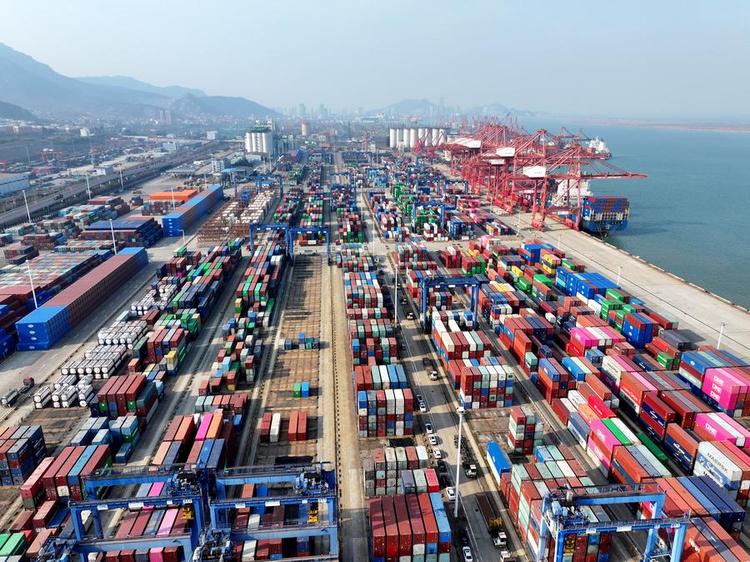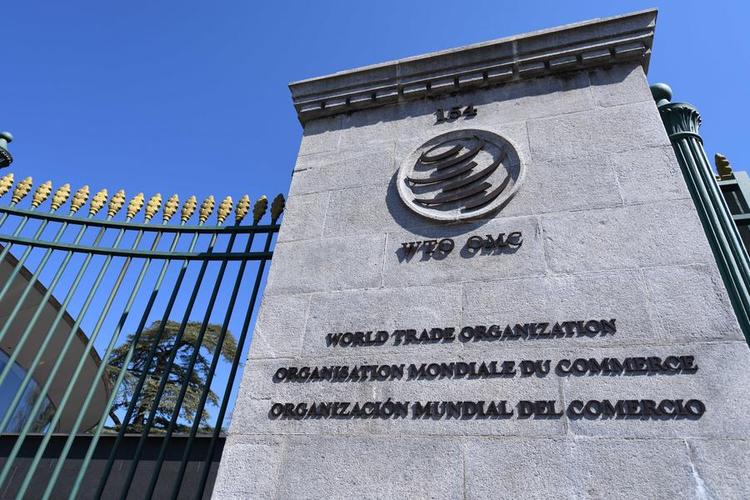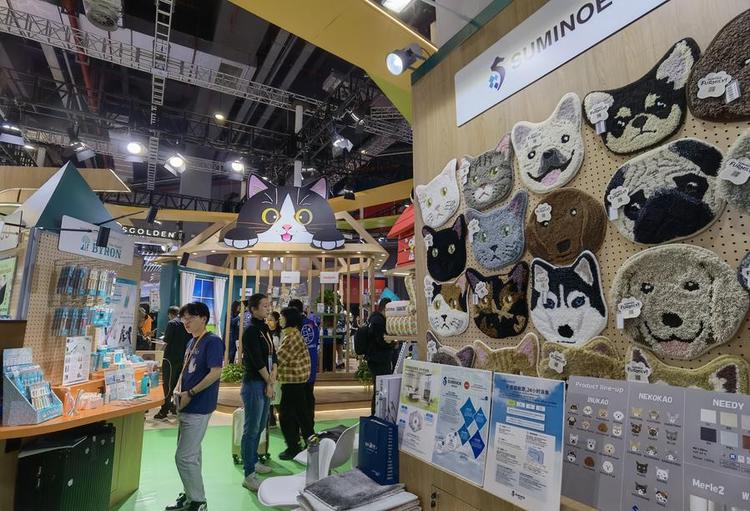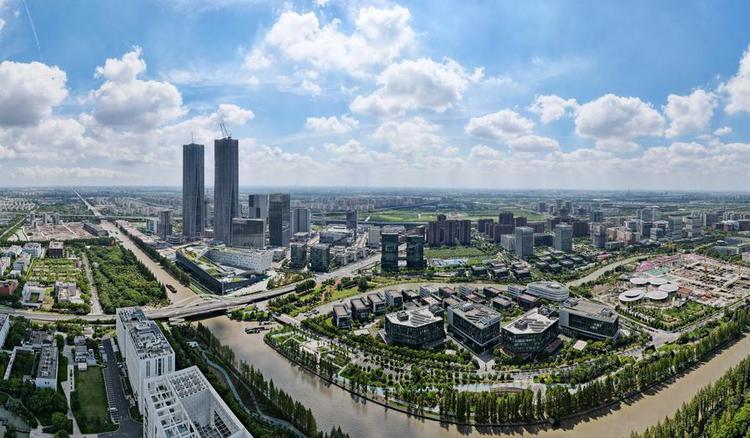




This aerial drone photo taken on Dec. 10, 2024 shows a container terminal of Lianyungang Port, east China's Jiangsu Province. (Photo by Wang Chun/Xinhua)
BEIJING, Dec. 11 (Xinhua) -- As Wednesday marks the 23rd anniversary of China's accession to the World Trade Organization (WTO), dealing with import competition remains a lingering challenge worldwide.
The unease among some Westerners over the import of China's electric vehicles (EVs) is strikingly similar to the concerns Chinese automakers once had about intensified competition from foreign brands when the country was preparing to join the WTO.
"Wolf's coming!" Chinese automakers cried back then, calling for protection of the domestic auto industry from foreign competitors, with major car companies even calling for delaying the sector's opening up.
Despite pressure from the domestic auto industry, Chinese officials were convinced that high tariffs and other trade restrictions would only shelter the country's obsolete auto industry and consumers would pay the price, according to Long Yongtu, who was China's chief negotiator for entry into the WTO.
Ultimately, China committed to slashing import tariffs and lifting other restrictions on automobiles as part of its WTO accession. Surprisingly, China's auto market did not wither but rather expanded rapidly.
Dong Yang, an industry insider who participated in the negotiations, was impressed to see the price of a Xiali car, a popular Chinese brand, drop drastically from over 90,000 yuan (about 12,527 U.S. dollars) to some 40,000 yuan, alongside a decline in the prices of imported cars.
It is no secret that global trade thrives on surpluses resulting from countries producing beyond domestic demand. Yet, the term "overcapacity" has lately been conjured up as a negative spin on "surplus," fueling a fear-driven narrative in the West about China's manufacturing power.

A logo of the World Trade Organization (WTO) is seen in Geneva, Switzerland, on April 5, 2023. (Xinhua/Lian Yi)
A WTO article challenges the common perception that import competition in industrialized countries has led only to losses, emphasizing there are significant gains as well.
A deep dive into China's evolving industrial and import landscapes over the past 23 years helps reveal China's growth pains from coping with the influx of so-called "overcapacity" from Western countries if the theory sold so hard by the West lately can stand, and what the country has learned from that journey.
HEAD IN THE SAND OR FACE COMPETITION HEAD-ON?
As Dong recalled, the brutal competition that came on the heels of the country's WTO entry had forced domestic automakers into constantly seeking their way out using market forces.
"In the beginning, it was a must to use imported technologies as consumers preferred foreign technologies to low-quality innovation by domestic brands. As importing technologies grew too costly and profits too thin, they started independent research and development," Dong told Xinhua.

Robots work at a welding workshop of Voyah, a Chinese electric auto brand, in Wuhan, central China's Hubei Province, April 1, 2024. (Xinhua/Xiao Yijiu)
The success of China's EV companies is widely attributed to their ability to outpace competitors through innovation.
In Dong's view, the rise of China's automakers to become leading global players is underpinned by four major advantages: higher efficiency, lower costs, economies of scale and constant innovation.
Beyond automobiles, the agricultural and financial sectors were also anticipated to face significant challenges, noted Huo Jianguo, vice chairman of the China Society for World Trade Organization Studies.
Instead, all three sectors underwent a smooth transition and achieved robust growth by embracing competition, Huo said in an interview with Xinhua. He attributed this success to the positive impact of competition, which enhanced productivity and improved product quality.
When the competition in industries such as pharmaceuticals, chemicals, electronics and home appliances increased, a legion of capable Chinese firms emerged, and the share of Chinese computers, smartphones, semiconductors and electronic products on the global market saw a significant rise.
"Facts have shown that an open market and the introduction of international competition are conducive to enhancing domestic manufacturing capabilities, thereby, laying a solid foundation for further participation in international competition," Huo said.
DEMONIZE FOREIGN PRODUCTS OR EMBRACE IMPORTS?
Since joining the WTO, China has continued to welcome foreign products with open arms.
The country maintained its position as the world's second-largest importer for the 15th consecutive year in 2023, accounting for 10.6 percent of total global imports last year, according to a recent report on China's imports authored by Wei Hao, associate dean of Beijing Normal University Business School, and his colleagues.
The ratio of China's trade surplus to GDP has decreased from 7.53 percent in 2007 to 4.59 percent in 2023, and imports expanded faster than exports, Tian Zhihong, a professor at China Agricultural University, shared his data with Xinhua.
China's share of global imports has also steadily increased, rising from 3.8 percent in 2001 to 10.58 percent in 2022, the largest growth among major countries and regions, according to Wei's report.
From 2001 to 2023, China's imports from France ballooned from 4.1 billion dollars to 37.3 billion dollars, and its imports from Germany rocketed from 13.8 billion dollars to 106.2 billion dollars, the report said.
Agricultural imports serve as a prime example. China's agricultural imports soared 14.1 times from 2001 to 2023, cementing the country's status as the top global importer since 2011, according to WTO data cited in a report from the National School of Food Security Strategy (NSFSS) at Renmin University of China.
"China has become a major driving force for global agricultural development in the past 20 years, especially in promoting the agricultural development of emerging economies with its vast market," Prof. Cheng Guoqiang, dean of the NSFSS, who participated in the WTO negotiations, told Xinhua.
On the country's imports from the United States, soybeans are definitely a heavyweight. China has a large demand for soybeans, while self-sufficiency is hard to achieve. It has strived to improve planting technology, and at the same time, continued to expand imports, Tian said.
Since 2001, U.S. soybean exports to China saw an explosive growth and the United States was once the primary supplier of soybeans to China.
An annual report on U.S. exports to China released by the U.S.-China Business Council earlier this year stated that China remains an important market for American companies, supporting nearly a million jobs in the United States.

This photo shows the pet pavilion set up by the Japan External Trade Organization (JETRO) at the seventh China International Import Expo (CIIE) in Shanghai, east China, Nov. 6, 2024. (Xinhua/Chen Aiping)
China has institutionalized its commitment to expanding imports through concrete actions over the past years. Among them were measures like cutting import duties, optimizing the list of cross-border e-commerce retail imports and launching the annual China International Import Expo (CIIE) in 2018. At the seventh CIIE held last month, deals worth 80.01 billion dollars were inked.
Last year, China's imports of consumer goods totaled 1.95 trillion yuan, up 1.2 percent from the previous year, reflecting the nation's increasing appetite for high-quality products to meet diverse consumer demands.
Wei believes that an increased proportion of consumer goods in China's total imports will bring more benefits to exporting countries.
ERECT BARRIERS OR OPEN WIDER TO ALL?
Huo criticized the attempt to distort a surplus of products as "overcapacity" since a perfect supply-demand equilibrium is non-existent in reality.
After China's WTO accession, the production capacity of mature industries such as steel, automobiles, chemicals and pharmaceuticals in Europe and the United States was constantly transferred to China.
"In a way, this was also transferring overcapacity by Western definition. The opening up of the Chinese market has undoubtedly played a supporting role in rebalancing the world economy," Huo said.
Noting that courageously opening the market and bringing in competition is one of the effective ways to stimulate the strength and resilience of an economy, Huo said China has leveraged opening up to advance reform, and the high-level opening up is key for the country to participate in international competition.
Despite the hesitation over import competition in some Western countries, free trade remains a viable catalyst for economic growth. It promotes the efficiency of resource allocation, allowing countries to allocate resources according to their comparative advantages and improving the overall efficiency of the world economy, Tian said.
He also stressed the importance of free trade in enhancing consumer welfare by increasing the variety of goods and services, lowering prices, and fostering the spread of technology and innovation -- factors especially crucial for developing countries.
Free trade also promotes connectivity of global supply chains, ensuring the smooth operation of supply chains and increasing the efficiency of global production, Tian added.

This aerial photo taken on Sept. 10, 2023 shows a view of Zhangjiang area of the China (Shanghai) Pilot Free Trade Zone in east China's Shanghai. (Xinhua/Fang Zhe)
"There are scholars who regard China's efforts to join the Comprehensive and Progressive Agreement for Trans-Pacific Partnership as its another push after the WTO entry to get aligned with the world's high-standard open economic system," Huo said.
Looking ahead, while import competition may continue to unsettle some, it is not enough to obscure the broader benefits of free trade.
"Protectionism is not an effective policy for protecting workers, as it often leads to unintended consequences. For instance, while higher tariffs may protect jobs in import-competing sectors, they can also jeopardize jobs in sectors that rely on intermediate inputs or are export-oriented if trading partners retaliate," according to a recent WTO blog.
Facts have proven that adhering to the path of mutually beneficial and win-win development is the fundamental way to maintain the prosperity of the world economy, Huo said.